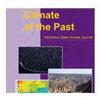New estimates of sulfate diffusion rates in the EPICA Dome C ice core
IF 3.2
2区 地球科学
Q1 GEOSCIENCES, MULTIDISCIPLINARY
引用次数: 0
Abstract
Abstract. To extract climatically relevant chemical signals from the deepest, oldest Antarctic ice, we must first investigate the degree to which chemical ions diffuse within solid ice. Volcanic sulfate peaks are an ideal target for such an investigation because they are high-amplitude, short-duration (∼3 years) events with a quasi-uniform structure. Here we present an analysis of the EPICA Dome C sulfate record over the last 450 kyr. We identify volcanic peaks and isolate them from the non-sea-salt sulfate background to reveal the effects of diffusion: amplitude damping and broadening of peaks in the time domain with increasing depth and age. Sulfate peak shape is also altered by the thinning of ice layers with depth that results from ice flow. Both processes must be simulated to derive effective diffusion rates. This is achieved by running a forward model to diffuse idealised sulfate peaks at different rates while also accounting for ice thinning. Our simulations suggest a median effective diffusion rate of sulfate ions of 2.4±1.7×10-7 m2 yr−1 in Holocene ice, slightly faster than suggested by previous work. The effective diffusion rate observed in deeper ice is significantly lower, and Holocene ice shows the highest rate of the last 450 kyr. Beyond the Holocene, there is no systematic difference between the effective diffusion rates of glacial and interglacial periods despite variations in soluble ion concentrations, dust loading, and ice grain radii. Effective diffusion rates for 40 to 200 ka are relatively constant and of the order 1×10-8 m2 yr−1. Our results suggest that the diffusion of sulfate ions within volcanic peaks is relatively fast initially, perhaps through an interconnected vein network, but slows significantly after 40 kyr. In the absence of clear evidence for a controlling influence of temperature on sulfate diffusivity with depth and age, we hypothesise that the rapid decrease in effective diffusion rate from the time of deposition to ice of 50 ka age may be due to a switch in the mechanism of diffusion resulting from the changing location of sulfate ions within the ice microstructure and/or interconnectedness of veins and grain boundaries.EPICA 圆顶 C 冰芯中硫酸盐扩散率的新估计值
摘要要从最深、最古老的南极冰中提取与气候相关的化学信号,我们必须首先研究化学离子在固体冰中的扩散程度。火山硫酸盐峰是这种研究的理想目标,因为它们是高振幅、短持续时间(3 年)的事件,具有准均匀结构。在此,我们对过去 450 千年的 EPICA 圆顶 C 硫酸盐记录进行了分析。我们确定了火山峰值,并将其从非海盐硫酸盐背景中分离出来,以揭示扩散的影响:随着深度和年龄的增加,峰值在时域中的振幅阻尼和拓宽。硫酸盐峰形还会因冰流导致冰层随深度变薄而改变。必须对这两个过程进行模拟,才能得出有效的扩散率。为此,我们运行了一个前向模型,以不同的速率扩散理想化的硫酸盐峰,同时还考虑了冰层变薄的因素。我们的模拟结果表明,全新世冰层中硫酸根离子的有效扩散速率中值为 2.4±1.7×10-7 m2 yr-1,略快于之前的研究结果。在更深的冰层中观测到的有效扩散速率要低得多,全新世冰层的有效扩散速率是过去 450 千年中最高的。在全新世之后,尽管可溶性离子浓度、尘埃负荷和冰粒半径存在差异,但冰川期和间冰期的有效扩散速率没有系统性差异。40 ka 到 200 ka 期间的有效扩散率相对恒定,约为 1×10-8 m2 yr-1。我们的研究结果表明,硫酸根离子在火山峰内部的扩散速度最初相对较快,可能是通过相互连接的矿脉网络进行的,但在 40 kyr 之后明显减慢。由于没有明确的证据表明温度对硫酸盐扩散率随深度和年龄的变化有控制性影响,我们假设从沉积到 50 ka 年龄的冰的有效扩散率的快速下降可能是由于硫酸根离子在冰微观结构中的位置变化和/或矿脉与晶界的相互连接所导致的扩散机制的转换。
本文章由计算机程序翻译,如有差异,请以英文原文为准。
求助全文
约1分钟内获得全文
求助全文
来源期刊

Climate of The Past
地学-气象与大气科学
CiteScore
7.40
自引率
14.00%
发文量
120
审稿时长
4-8 weeks
期刊介绍:
Climate of the Past (CP) is a not-for-profit international scientific journal dedicated to the publication and discussion of research articles, short communications, and review papers on the climate history of the Earth. CP covers all temporal scales of climate change and variability, from geological time through to multidecadal studies of the last century. Studies focusing mainly on present and future climate are not within scope.
The main subject areas are the following:
reconstructions of past climate based on instrumental and historical data as well as proxy data from marine and terrestrial (including ice) archives;
development and validation of new proxies, improvements of the precision and accuracy of proxy data;
theoretical and empirical studies of processes in and feedback mechanisms between all climate system components in relation to past climate change on all space scales and timescales;
simulation of past climate and model-based interpretation of palaeoclimate data for a better understanding of present and future climate variability and climate change.
 求助内容:
求助内容: 应助结果提醒方式:
应助结果提醒方式:


